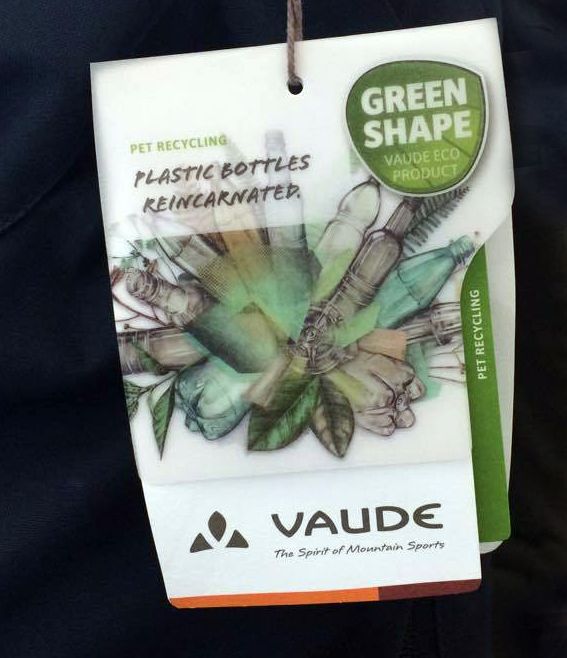
Transparent information for customers who want to make responsible choices
Meaningful product labeling
Customers need information about a product’s material composition and the place of manufacture in order to be able to accurately compare products and have a true purchasing choice. This is a genuine concern for us here at VAUDE – informing our customers as extensively as possible.
There are, however, different regulations and guidelines for labeling products. The requirements for the labeling of textiles and shoes are complex and not always easy to put into practice.
VAUDE offers more information than required by law

According to textile labeling laws, fiber percentages and percentages of materials of animal origin must be listed on the label. Additional information such as “organic” or “recycled” is no longer permitted and must be in a different form such as on a product hangtag. All of our textile products are subject to this labeling law.
In addition to the textile labeling law, our textile products have a care label in accordance with ISO 3758, an international standard for care labeling of textile products.
We provide the following information for our products:
- Fiber content
- Care instructions
- Country of origin
- Date of manufacture
- Green Shape
- percentage of materials of animal origin
Additional information on the product

We offer our customers additional valuable information on product hangtags. These hangtags provide information about environmental and technical aspects as well as information on our system suppliers such as Polartec® and Sympatex®, sketches and photos of the product and information about awards and patents.
In addition we label those products that fulfill our strict ecological criteria with the VAUDE Green Shape label. Details on Green Shape here
As of the Summer Collection 2016, we also began labeling products that consist of at least 30% recycled materials or at least 30% renewable materials.
We want to make it even easier for our customers to recognize eco-friendly products and make informed purchasing decisions.
However, to avoid creating a "label jungle" on the product, we have established a hierarchy of labels. VAUDE products carry only one of the following eco-labels:
- Green Shape - if the product meets the strict Green Shape criteria.
- Recycled materials - if the product isn't a Green Shape but consists of at least 30% recycled materials.
- Renewable materials - if the product isn't a Green Shape but consists of at least 30% renewable materials.
Technical products – child carriers, panniers, avalanche backpacks and tents – are given additional product-specific instructions on use, assembly, maintenance and special safety instructions.
Care instructions as ecological as possible
We make sure that our care instructions are as ecological as possible and recommend, for example, washing at low temperatures and air drying whenever possible. We are also working with our material suppliers on this issue. Every season, we check all labels to ensure that the material composition and care instructions have not changed.
In 2016 no violations of labeling regulations
We work very closely with our material suppliers to label our products properly. They provide detailed information on the fiber composition and provide us with the specific care instructions. In our Product Lifecycle Management system (PLM), this information is stored in a separate workflow that includes control loops so that we can reliably manage queries and labels.
Product labels are checked each season. When there are small changes in the materials used, we pass along this information. So far, there have been no violations of mandatory labeling.
Consumer protection and competition law
The regulations for product labeling must be respected to avoid distortion of competition and to meet consumer protection requirements.
| GRI: | G4-PR3 |
| GRI: | G4-PR4 |
| GRI: | G4-DMA Labelling |
www.siegelklarheit.de (German)






